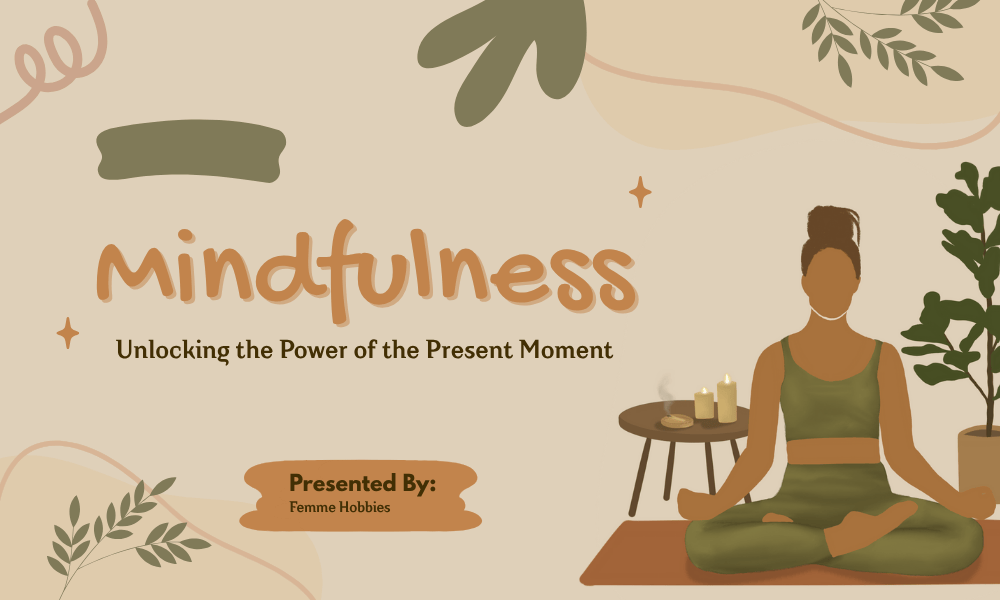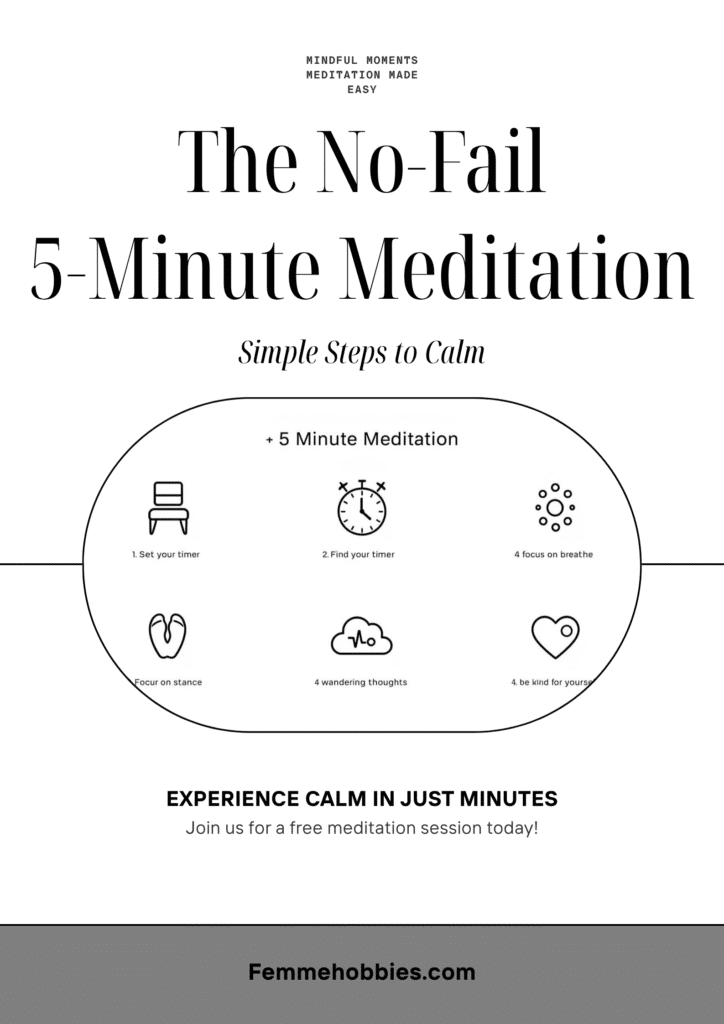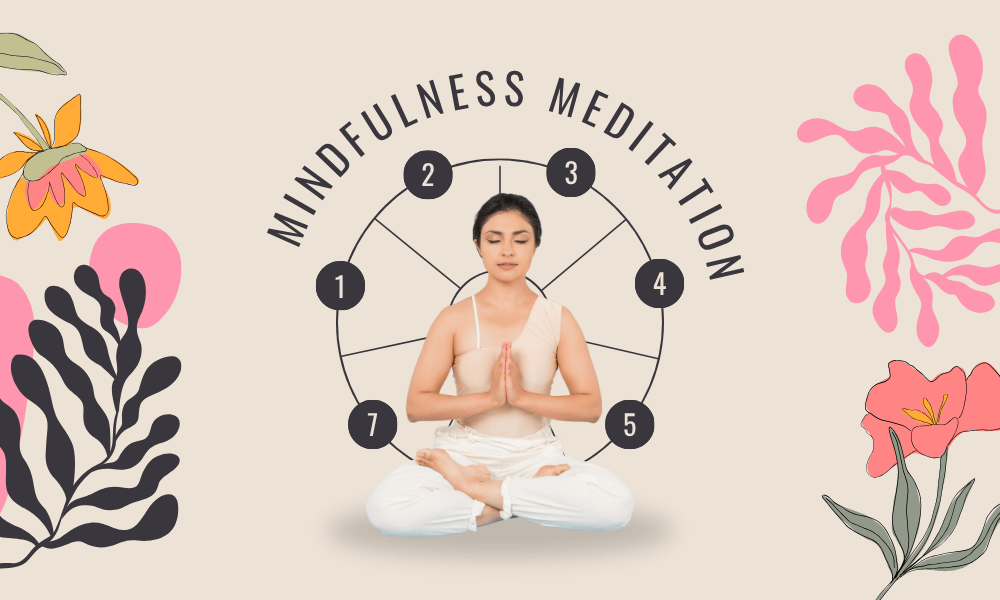You’ve heard you should try mindfulness meditation. You’ve tried to sit still, but your to-do list, worries, and random thoughts (what’s for dinner?) just won’t quit. You feel like you are failing at being mindful. What if you’re misunderstanding what it even means?
Here’s the truth: mindfulness meditation isn’t about emptying your mind or achieving some zen-like state of blissful nothingness. It’s about learning to be a kind and curious observer of your mind. The good news? You might already be practicing it without realizing it.
At Femme Hobbies, we see this all the time. Mindfulness is the secret ingredient that turns a simple hobby into a profound act of self-care. The calm focus you find while knitting or baking is the same quality of attention we cultivate in mindfulness meditation.
True mindfulness meditation is the simple practice of gently escorting your attention back to the present moment. Think of it like training a puppy—you don’t get angry when it wanders off; you just patiently bring it back. Your attention is the puppy, and the present moment is its home.
My Aha! Moment: From Frustration to Freedom

I used to think meditation was a special skill I didn’t have. Then, one day while kneading bread dough, I noticed something different. I wasn’t worrying about tomorrow’s meeting or mentally rewriting yesterday’s awkward conversation. I was just focused on the feel of the dough, the sound of the kitchen, the smell of yeast. My body felt calm.
That’s when it hit me: I was experiencing mindfulness. My hobby had taken me there effortlessly. This moment taught me that mindfulness isn’t a separate task you need to add to your already packed schedule. It’s a quality of attention you can bring to anything you’re already doing.
So, What Is Mindfulness Meditation?
Let’s skip the clinical jargon and get real. Mindfulness meditation is simply the practice of paying attention to what’s happening right now, without trying to change it or judge it.
When you’re being mindful, you are not lost in thoughts about the past or future. You’re fully present with whatever is happening, whether that’s the sensation of breathing, the sound of rain, or even the feeling of anxiety in your chest.
The meditation part? That’s just setting aside dedicated time to practice this skill of present-moment awareness. Just like you might set aside time to practice piano or go for a run, meditation is your workout for attention.
Why Bother? The Benefits That Actually Matter for Your Busy Life
In a world that constantly pulls your attention in ten directions, mindfulness is the gentle art of pulling it back to yourself. The science is clear, but what does that actually feel like when you’re juggling work, life, and finding a moment of peace? Here’s how it shows up in your real life:
It Creates a Pause Button: Instead of instantly snapping at your partner when they leave dishes in the sink, or stress-eating when work gets overwhelming, mindfulness gives you a crucial half-second to choose a kinder response. That tiny pause can save relationships and prevent regrets.
It Turns Down the Volume on Anxiety: Mindfulness doesn’t make anxiety disappear like magic. But it helps you recognize worried thoughts as passing mental weather, not permanent reality. You learn to observe your anxious thoughts with curiosity rather than getting swept away by them.
It Makes Joy More Joyful: When you’re fully present, ordinary moments become richer. That first sip of coffee, the warmth of sunlight through your window, the satisfying click of knitting needles—all of it feels more vivid and meaningful when you’re paying attention.
It Improves Sleep: By practicing mindfulness during the day, you develop the ability to let go of racing thoughts when your head hits the pillow. Your mind learns it doesn’t need to solve every problem at 2 AM.
You’re Probably Already Doing It
Here’s what most mindfulness meditation guides won’t tell you: those moments when you’re completely absorbed in a hobby? That’s active mindfulness.
Mindful Knitting: When you’re focused on the rhythm of the stitches, feeling the texture of the yarn, hearing the gentle click of the needles, you’re practicing mindfulness.
Mindful Cooking: Chopping vegetables with full attention, noticing the colors and textures, smelling the herbs—this is meditation in action.
Mindful Walking: Feeling your feet hit the ground with each step, noticing the air on your skin, observing the world around you without judgment—pure mindfulness.
This reframes meditation from something you should do to something you already enjoy and are capable of. The formal sitting practice simply strengthens this natural ability.
Your No-Fail 5-Minute Mindfulness Meditation for Beginners

Ready to try a simple practice? Here’s a foolproof approach that works whether you’re a complete beginner or someone who’s tried and failed before:
Get Comfortable: Sit in a chair with your feet on the floor, or lie down if that feels better. This isn’t about enduring discomfort or sitting in a perfect posture.
Set a Timer: Five minutes is plenty. Your phone’s timer works perfectly fine.
Feel Your Feet: Notice the physical sensation of your feet touching the floor or your legs touching the chair. This grounds you in your body and the present moment.
Notice Your Breath: Don’t try to change your breathing. Just feel the air moving in and out of your body naturally. Notice the coolness on the inhale, the warmth on the exhale.
Expect Your Mind to Wander: This is the most important part. Your mind will think about work, dinner plans, and that weird dream you had last night. This isn’t failure—it’s the whole point! When you notice you’re lost in thought, gently say thinking to yourself and guide your attention back to your breath.
Be Kind: The act of noticing your wandering mind and returning to your breath—that’s meditation. You’re not trying to stop thoughts; you’re practicing the skill of returning to the present moment with kindness.
What If I Can’t Even Do 5 Minutes?
Try one minute. Or just three conscious breaths. Success isn’t measured by how long you sit or how calm you feel. Success is in the trying, in the gentle act of returning your attention to the present moment, no matter how many times your mind wanders.
Can’t sit still? Try a walking meditation. Step outside and pay attention to the feeling of your feet hitting the ground with each step. Notice your surroundings without trying to think about them.
Weaving Mindfulness Into Your Self-Care Routine
Consider making a brief mindfulness practice the first thing you do during your personal time. Before reaching for your phone or diving into your hobby, take five minutes to center yourself with the breathing practice above.
Then, carry that quality of attention into whatever comes next. If you are journaling, notice the feel of the pen in your hand and the sound it makes on paper. If you’re crafting, pay attention to the textures, colors, and sensations involved.
This creates a beautiful bridge between formal meditation and mindful living, making the benefits of your practice ripple throughout your entire day.
When to Seek More Help
While mindfulness is a powerful tool for managing stress and anxiety, it’s not a substitute for professional mental health care. If you’re dealing with clinical anxiety, depression, or trauma, please reach out to a qualified therapist. Think of mindfulness as a valuable addition to your mental health toolkit, not a cure-all.
Your Mind Is Already Perfect
Mindfulness meditation isn’t about becoming a different person or achieving some special state of consciousness. It’s about making friends with the person you already are—racing thoughts, worries, and all.
Your busy mind isn’t broken or wrong. It’s just doing what minds do: thinking, planning, remembering, imagining. Mindfulness helps you step back and observe this mental activity with the same gentle curiosity you might use when watching clouds pass in the sky.
The practice is beautifully simple: notice when your attention has wandered, and kindly return it to the present moment. That’s it. Each time you do this, you’re strengthening your capacity for awareness, compassion, and choice.
Let’s try it together, right now.
I mean it. Before you click away or keep reading…
- Set your phone down.
- Close your eyes.
- Just feel your next three breaths. Not perfect breaths, just natural ones.
Welcome back. However, that felt—whether calm or chaotic, you just meditated. That’s all there is to it. Your journey has already begun.

